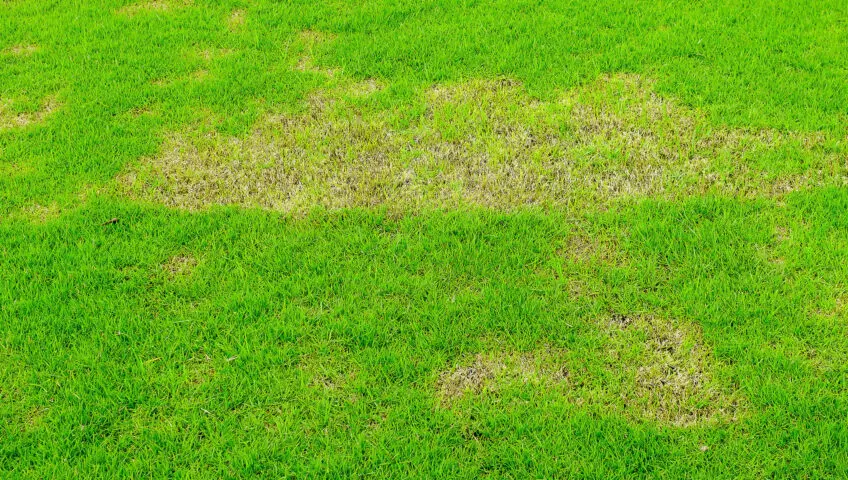A rich, green lawn is a source of pride for a homeowner, but it can quickly turn into frustration when brown patches start to appear. These unsightly blemishes are often the result of a common lawn disease known as brown patch fungus.
Brown patch fungus, scientifically known as Rhizoctonia solani, is a fungal disease that targets grass. It typically thrives in warm, humid conditions and can appear in both cool and warm-season grasses. The fungus attacks the blades, causing them to wither and turn brown, hence the name. While it’s more common in the summer and early fall, it can occur year-round in some regions.
Identification
Identifying brown patch fungus is crucial for effective management. Look out for the following signs:
- Circular patches: Brown patch typically forms circular or irregular patches on your lawn. These can range from a few inches to several feet in diameter.
- Tan to brown grass blades: The grass within the affected area will turn tan or brown, and the blades may appear water-soaked or greasy in texture.
- Visible mycelium: In the early morning, you might spot a white, cobweb-like growth called mycelium on the grass blades within the affected areas. This is a clear indication of the presence of the fungus.
Preventing the fungus
Prevention is often the best approach when dealing with brown patch fungus. Here are some key strategies to keep your lawn healthy:
- Proper lawn maintenance: Maintaining a healthy lawn is your first line of defense. Ensure your grass is well fed, watered and mowed at the correct height for your specific grass type. Different grasses have different mowing height requirements.
- Aerate the soil: Lawn aeration can improve the air and water circulation within the soil, helping to prevent the development of brown patch fungus.
- Avoid overwatering: Excess moisture creates an ideal environment for the fungus to thrive. Water your lawn early in the day to allow drying before nightfall. Avoid overwatering.
- Improve air circulation: Trim back overhanging trees and shrubs to enhance air circulation and sunlight exposure to the lawn.
- Use resistant grass varieties: When planting or overseeding your lawn, choose grass varieties that are resistant to the fungus.
Treating brown patch fungus
If you notice the symptoms, it’s important to take action promptly to prevent further damage. Here are some steps to consider:
- Fungicide application: Contact Slug-A-Bug. We apply effective treatments that have minimal impact on the environment.
- Prune affected areas: Carefully remove and dispose of the affected grass, including the thatch layer if it’s affected.
- Increase sunlight and airflow: Trim back any vegetation that might be blocking sunlight and preventing proper air circulation on your lawn.
- Adjust lawn care practices: Temporarily adjust your watering and fertilization routine to discourage fungal growth.
- Continue monitoring: Keep a close eye on your lawn for any signs of the fungus returning, and be ready to take action if needed.
Recovery takes time
As we approach the winter months, grass with brown patch fungus can recover slowly. That’s because the growth process of your grass shifts into low gear when there are fewer hours of sunlight and cooler weather.
Also, it’s important to note that the fungus is in the soil itself and, therefore, cannot be removed. Even with treatment, the grass can take months to fully recover, but it does recover. Unlike chinch bugs, brown patch fungus doesn’t actually kill the grass.
Remember, Slug-A-Bug’s state-of-the-art lawn care is just a phone call away. Contact us today at (321) 259-7844 to enjoy a disease-free lawn, year-round.
For more information:
Turf: Brown Patch | Center for Agriculture, Food, and the Environment at UMass Amherst
Lawn Maintenance – Solutions for Your Life – University of Florida, Institute of Food and Agricultural Sciences – UF/IFAS (ufl.edu)
PP-233/PP154: Homeowner’s Guide to Fungicides for Lawn and Landscape Disease Management (ufl.edu)
Lawn Care Services – Slug-A-Bug Pest Control (slugabug.com)
